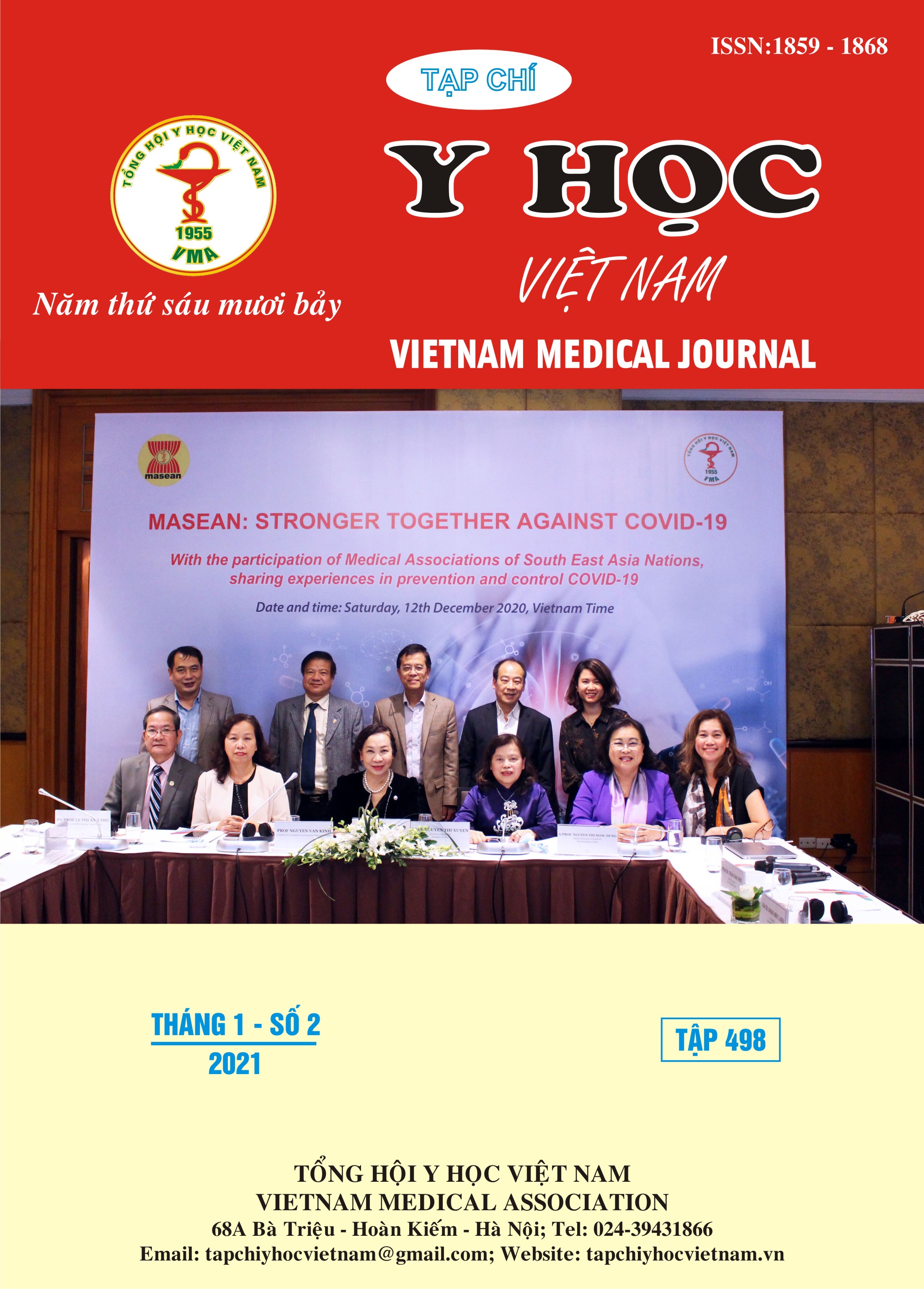ASSESSEMENT OF RESULTS AND SAFETY OF BILIARY STONE REMOVE TECHNIQUES IN PATIENTS WITH BILIARY OBSTRUCTON BY STONES
Main Article Content
Abstract
Objective: To study the effectiveness and safety of the biliary stone removal (BSR) through the percutaneous transhepatic biliary drainage (PTBD) technique under under fluoroscopic guidance (DSA). Materials and Methods: The study on 43 patients with billiary obstruction by biliary stones, remove stones through the skin by percutaneous transhepatic catch and broken the stone and then removing it through a catheter or using a balloon sphincteroplasty flushing technique, a pushing technique after sphincteroplasty. Results: The technical success rate of gastrointestinal biliary recirculation was 97%, in terms of removing all stones was 81.4%, in no case of major complications, only 4.6% have bleeding, 6.9% had mild biliary tract infections and 4.6% pain in the intervention. 93% of patients only need to do it once to get the effect. Conclusion: The BSR through the percutaneous transhepatic under flouroscopic guidance technique is a safe technique, with a high success rate of recirculating bile ducts - gastrointestinal.
Article Details
Keywords
the biliary stone removal
References
2. Ozcan N., Kahriman G., và Mavili E. (2012). Percutaneous Transhepatic Removal of Bile Duct Stones: Results of 261 Patients. CardioVascular and Interventional Radiology, 35(3), 621–627.Ilgit E.T., Gürel K., và Onal B. (2002). Percutaneous management of bile duct stones. Eur J Radiol, 43(3), 237–245.
3. J. Shin, H. Shim et al. A single center study of biliary stone removal through the percutaneous transhepatic biliary drainage route: results of 695 patients - Journal of Vascular and Interventional Radiology. , accessed: 02/07/ 2018.
4. Phạm Văn Anh (2014), Nghiên cứu Đánh giá kết quả phẫu thuật có tán sỏi điện thủy lực điều trị sỏi đường mật trong gan có chít hẹp đường mật. Tại BV Việt Đức - LV tốt nghiệp Thạc SỸ. .
5. Riciardi R, Islam S, Canete JJ et al (2003) Effectiveness and long-term results of laparoscopic common bile duct exploration. Surg Endosc 17:19–22.
6. Schirmer BD, Winters KL, Edlich RF (2005) Cholelithiasis and cholecystitis. J Long Term Eff Med Implants 15:329–338. .
7. Kim H.C., Park S.H., Shin H.C., Park S.J., Kim H.H., et al (2004), “Three- dimensional reconstructed images using multidetector computed tomography in evaluation of the biliary tract: an illusive review”, Abdom Imaging, 29, pp. 472- 478.
8. Shin J., Shim H., và Yoon H. (2014). A single center study of biliary stone removal through the percutaneous transhepatic biliary drainage route: results of 695 patients. Journal of Vascular and Interventional Radiology, 25(3), S50.
9. Park Y.S., Kim J.H., Choi Y.W. và cộng sự. (2005). Percutaneous treatment of extrahepatic bile duct stones assisted by balloon sphincteroplasty and occlusion balloon. Korean J Radiol, 6(4), 235–240.


